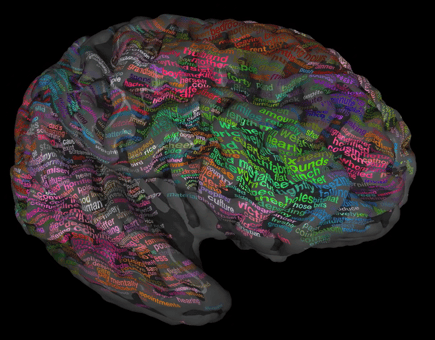Reading, concepts, and the brain
Research Questions
How do humans read?




Reading is one of the most remarkable human abilities. When we read, our eyes will make rapid, short movements called saccades, and between these saccades, our eyes pause briefly, known as fixations. Although there are a number of studies suggesting that during every fixation, we extract information from both foveal and parafoveal vision, the detailed mechanisms underlying parafoveal processing remains unclear. Utilizing the flankers tasks and behavioral measurements, I am currently exploring:(1) How much information (orthographic, phonology, semantic or syntax) can we extract from parafoveal vision? (2) What is the temporal dynamics of foveal and parafoveal processing? Do they take place at the same time, serially or with overlapping stages? I am also very interested in the transposed word effect (e.g., misread "Do love you me" as " Do you love me"). In the future, I aim to combine eye-tracking with MEG/EEG techniques to dive deeper into these question.
How are semantic concepts organized, accessed, and composed ?
Understanding how the human brain organizes and accesses semantic concepts is a fundamental pursuit in cognitive neuroscience. Currently, I am interested in the spatial-temporal dynamics of conceptual activation. Our present study and previous research have indicated flexible multi-staged processing of semantic concepts, and recently utilizing EEG, I am investigating the corresponding functions of these different stages: how do these different stages interact and how do they adaptively function based on the context and task demands?
In addition, a remarkable ability of humans is to compose different semantic concepts to create new concepts. Most previous studies have focused on the brain areas and their corresponding functions involved in the process of semantic composition, while the detailed mechanisms remain unclear. Currently, we are using simultaneous recording of MEG-EEG signals to reveal the flow of how the newly composed concepts form and evolve.


